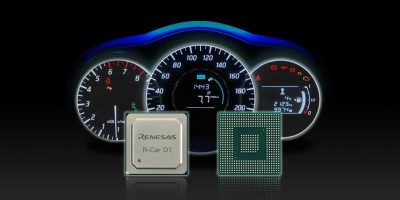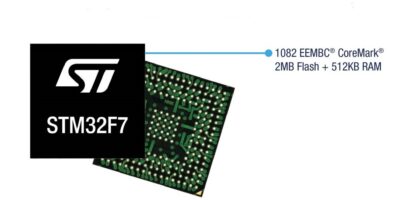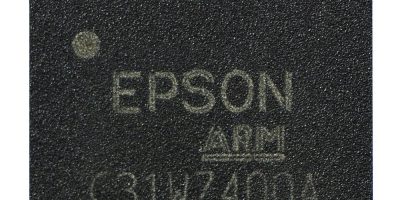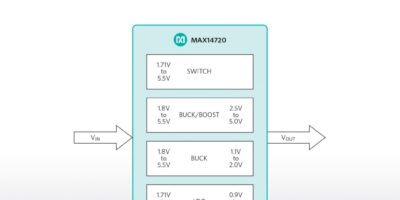The first member of SoC in the R-Car family have been announced by Renesas. They can be used in 3D instrument cluster systems and provide a migration path as more automotive systems are expected to shift to 3D graphics instrument cluster systems in the near future.
ICs & Semiconductors
Microcontrollers are graphic-centric with ARM Cortex-M7 core
Opening up possibilities for portable or wearable devices, smart building and industrial controllers, smart appliances and medical equipment, the STM32F767 and STM32F769 microcontrollers have up to 2Mbyte flash and 512kbyte RAM.
32bit flash microcontrollers double battery life
Based on the ARM Cortex-M0+ processor, the S1C31W74 microcontroller is sampling. This is Epson’s first in a new series of energy-efficient microcontrollers with integrated 32bit flash memory.
According to the company, the combination of the energy-efficient ARM Cortex-M0+ processor, and the company’s own low leak process and circuit technology helps to enable powerful microcontrollers with modest power requirements, thus extending battery life.
The S1C31W74 consumes only 900nA in RTC mode and 150µA/MHz in run mode, and can operate up to two times longer on battery power than one of the company’s original core 32bit flash microcontrollers. This energy efficiency is a step closer, says the company, to realising smart watches that do not require recharging and IoT terminals for environmental monitoring applications, where power consumption is a critical factor.
The microcontroller is a single chip, housed in a 1mm thick VFBGA8HX-181 package. The IC includes an LCD driver that can directly display up to 2,304 dots, a USB 2.0 full-speed device controller, 512kbytes of flash memory, and 128kbytes of RAM. It is also offered as a bare chip.
An optional evaluation kit includes an evaluation board, debug probe and an IDE, based on IAR Embedded Workbench for ARM.
The microcontrollers are sampling now, with volume production scheduled for July 2016.
http://www.epson-electronics.de
Power management chip extends battery and shelf life
Designers can optimise power and battery life for wearable medical/fitness and IoT applications, using the MAX14720 PMIC, says Maxim Integrated. It can be used for non-rechargeable battery (coin cell, dual alkaline) applications where size and energy efficiency are critical. An electronic battery seal also extends shelf life by effectively disconnecting the battery prior to initial power-up.
It also reduces bill of materials with the functionality of five discrete devices – power switch, linear regulator, buck regulator, buck-boost regulator, and monitor, says the company.
About Weartech
This news story is brought to you by weartechdesign.com, the specialist site dedicated to delivering information about what’s new in the wearable electronics industry, with daily news updates, new products and industry news. To stay up-to-date, register to receive our weekly newsletters and keep yourself informed on the latest technology news and new products from around the globe. Simply click this link to register here: weartechdesign.com







